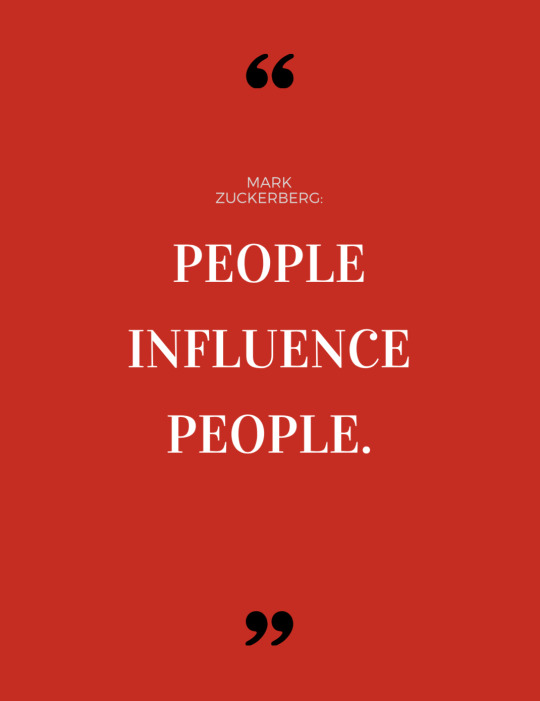Don't wanna be here? Send us removal request.
Text
Digital Equity + the Digital Divide
Digital, social media, technology, online are seemingly some of the most common words used in today's digital society, especially for Gen X, Millenials, and Gen Zers. As a society, we have accepted these technological changes and adapted to their influence in our everyday lives, including in our workplace settings, classrooms, retail and foodservice settings, etc. It has become almost a necessity to be proficient in these types of digital settings, however, this digital access is not always equal for those across the nation and the world. Regions of the world are facing digital illiteracy as a result of unequal digital settings and thus leading to a greater digital divide. Before we can fully understand these concepts, we must determine what exactly is digital equity and what forms a digital divide.
According to the National Digital Inclusion Alliance, digital equity is defined as, “a condition in which all individuals and communities have the information technology capacity needed for full participation in our society, democracy and economy.” With this, one can see the importance of digital equity from a cultural and civic perspective that is essential to employment, learning, and access to a growing amount of services.
Additionally, according to The SAGE Encyclopedia of Educational Technology, digital divide is defined as “the disparity that exists among individuals and communities around the world with varying degrees of access to digitally mediated information and communication technologies (ICTs) and ability to benefit from digital resources.”
From these definitions, we can see how the two work hand in hand to form a barrier between the tech-friendly of the world and those who do not have the same digital/tech opportunities as them. A great example of digital inequally and the formation of a digital divide is the debate over the 2020 census being digital instead of its original paper format. This new form of conducting the census is concerning many rural Americans as many do not have access to internet platforms and digital devices. For example, “Ohio estimates just under 9% of its population has no access to broadband Internet, and despite throwing dollars at the problem, rural, older and lower-income Americans still face high costs to cross the digital divide” (Ellerbrock, Government Technology, 2019). These extreme technological differences in society can greatly affect the way we interact and the way we conduct matters such as voting, polls, collecting data, etc. It is important as digital learners to expand our understanding and availability of technology and its influence on those who may be divided or face digital injustice. Additionally, members of the State Educational Technology Directors Association gathered on Capitol Hill to demonstrate to federal policymakers the importance of technology-enhanced learning and recommend actions for government leadership to better prepare students for life and work (Foresman, EdScoop, 2019). All around our nation, there are digital inequalities and divides and it is up to us to make a difference, advocate for these individuals and merge the divide.
1 note
·
View note
Text
Digital Citizenship 101
When we think of citizenship we often think of being citizens of a place, country, community, etc. However, when it comes to citizenship in the digital space it can often be a mysterious and perplexing concept to consider. We can define digital as “involving or relating to the use of computer technology.” Pretty simple and straightforward for all of us in the digital world, right? But when we tie in citizenship, which can be defined as “the position or status of being a citizen of a particular country,” the understanding changes. Now, when we consider the two together, we can define digital citizenship as the “ability to practice and advocate online behavior that demonstrates legal, ethical, safe, and responsible uses of information and communication technologies (Greenhow & Ribble, 2009, p. 125). With this in mind, we can see that digital citizenship is a key facet in our growing digital age and is an essential skill that needs to be taught to the youth and understood/followed by those who currently interact with digital platforms. Respectful and knowledgeable online environments are always a good idea!
When this definition of digital citizenship is considered, the relation to digital literacy is strong. They both work to improve online environments and teach users to take note of what is safe and what is not. Users that are both digitally literate and have digital citizenship are more inclined to safeguard their private information, respect themselves and others, carefully manage their digital footprint, and stay safe online. However, the key difference between the two is the fact that digital literacy focuses more on the user's ability to read and analyze situations and act on them as they see fit. On the other hand, digital citizenship focuses more on the quality of these interactions and habits that impact the content output and the communities they are associated with.
While digital citizenship is important for all digital users and communities, it is most important to consider implementing and teaching these concepts in the classroom to younger children. With technology being used more and more in the classroom, it is important to teach students to be knowledgeable, respectful, and aware of their actions and interactions with others. Due to this digital shift, educators are realizing the importance of teaching these programs to their students and are implementing programs such as Common Sense media’s K-12 Digital Citizenship Curriculum. According to an article by Edscoop, research from Project Zero at the Harvard Graduate School of Education shows that educators’ top concerns regarding digital citizenship are cyberbullying, sexting, fake news, and digital well-being.
Overall, digital users need to understand this concept of digital citizenship to ensure safe and valuable online interactions. There are many resources to explore digital citizenship such as platforms such as Common Sense Education, DigitalCitizenship.net, and ISTE.org. When we take the time to understand how we can be better digital citizens, we set up ourselves and others for a more beneficial online community and digital space.
1 note
·
View note
Text
Social Media & Participatory Culture
Participatory culture. We know it today as “how-to” videos on Youtube, retweeting or resharing a post on Twitter or Facebook, fan fiction writing, podcasting, blogging or subscribing to various online communities. Everywhere we look on digital sites or platforms, people are taking part in participatory culture. Users have strayed from just consuming media to now being active manufacturers of media. In Henry Jenkins TEDxNYED, he describes participatory culture as simply “throwing ideas into the world and people bringing them back in an improved way.” This idea relates strongly to social media due to the fact that every enhanced retweeted, repinned, reshared post is users taking part in participatory culture. Users post a photo or tweet, then the next user makes a new tweet from it or edits the photo or even makes a podcast from the ideas presented from the original post. Even editorial sources are taking part in participatory culture by implementing live Twitter streams on their websites to show live conversation of news and popular culture.
According to a study conducted by the Pew Internet and American Life project, more than one-half of all American teens - and 57 percent of teens who use the internet- could be considered creators (Jenkins, Puroshotma, Clinton, Weigel, & Robison, 2009). This number has since changed to 65% of teens producing media (Jenkins, 2010). With this in mind, I began to analyze my own “participation” habits and concluded that I feel as though I am equal parts of a consumer and a producer. Being a strategic communications major, I consume a lot of media - whether it be social media, blogs, podcasts, Youtube videos, etc. On the other hand, I also produce a lot of media, especially social media. I have a deep passion for graphic design, and although I am not a graphic design major or a professional Adobe InDesigner, I still like to think I have an eye for social media design. This being said, I have had plenty of internships in which I created social graphics or crafted blogs that require design inspiration. For me, Pinterest is a platform in which I find myself inspired. I love aesthetically pleasing graphics and Pinterest allows me to find inspiration and then put my spin on content found. (Examples from my internship below.)


Being a student also requires me to be an active online community member and curate projects that tell stories digitally. For example, one could consider Canvas as an online community as students are required to participate in class discussions, project submissions and allow them to communicate with professors and TAs. Additionally, many classes in my major have required me to make digital ads, presentations and digital magazines. These forms of media have been inspired by another form of media or formed in collaboration with a classroom team. Here, especially, we see participatory culture come to life. (A couple pages of my magazine shown below.)


As for my own personal favorite entertainment sources of “participation,” I am an avid listener of the podcast, Straight up with Stassi, subscribe to Youtuber, Emma Chamberlain, the food blog, Hungry Blonde, and, while Game of Thrones was airing, I followed and subscribed to many Twitter accounts and blogs. These are just a few of my favorite media sources to participate with. In each of these communities, the followers have similar interests to me, making it easier and more comfortable to engage with. This idea is important in participatory culture, due to the fact that there needs to be a motivator or something that sparks conversation within the media form.
Overall, when thinking of participatory culture and its relation to technology and social media, I appreciated what Jenkins stated in his TEDx talk,” We should not pay attention to the history of technology. Rather, how the people who used these technologies in history took advantage of every new technology as it was presented, as a vehicle by which to participate and engage with the world and make a difference in the community.” At the end of the day, we're all participants of the ever-evolving digital culture and it is up to us on how we make our voices heard and make a difference.
1 note
·
View note
Text
Reflection #1
It is no question that social media has taken the world by storm. From when we wake up to when we shut our eyes at night, social media plays a constant role in our daily habits. When we look at this overarching trend, it is often said that the key players are the millennials and gen Z crowd. However, after further looking into research conducted by Common Sense Media and Pew Research Center, we find that adults are just as guilty. According to Pew, approximately 88% or of 18-29-year-olds and 78% of 30-49-year-olds indicate that they use social media. From this, we can see that it is true that a large majority of 18-49-year-olds use social media but it is also important to differentiate how age affects which platforms are used. Youtube, Snapchat and Instagram remain prominent in the lives of 18-24-year-olds, whereas 30-50+-year-olds are more inclined to use Facebook and limited Instagram and Twitter. Being that younger crowds interact with such a different array of platforms it begs the question: Are these platforms designed for youth? And, if so, does this design attract the bullying stigma that comes with youth society?
“It has made me more social,” “I feel less lonely when I use social media,” “I feel there are more people I can talk to and share my feelings with on social media” (Common Sense Media video). From these phrases, there is no doubt that social media has positive effects and, when used correctly, can be extremely beneficial in the lives of teens and adults. Social media virtually allows all users to communicate in a matter of seconds, creatively share their passions and lives, interact with brands and celebrities, and gives users a voice. For most kids and adults, these elements are what makes social media so unique and so important in their everyday lives.
On the other hand, in the research conducted by Common Sense Media, 70% of teens feel left out or excluded when using social media and 35% of teens said that they have been cyberbullied while using social media. Although social media can be beneficial in some regards, we see here that teens are getting the brunt of the hate shared on social media sites. In turn, this can affect their mental health, self-esteem, confidence in social interactions, and thus, only lead to a harder reality down the road. While it is true that platforms, such as Instagram and Facebook, are working hard to implement preventative bullying measures, there is no definitive answer to how we solve this unfortunate element of social media. It is up to users to be mindful and aware of the power a single word, phrase or photo can inflict on someone's life and social wellbeing.
In addition to this, it is important to note that there was a significant decline in the way teens communicate in person since their usage of social media increased. What was once 49% of teens favorite platform to communicate on, now is only 32% of teens preferred way of communication. This rapid decline puts into question whether social media is benefiting the social skills of young adults at all. With the evolution of social media constant and changing day by day, it will be interesting to see just how social social media will make the young adults of generations to come.
2 notes
·
View notes